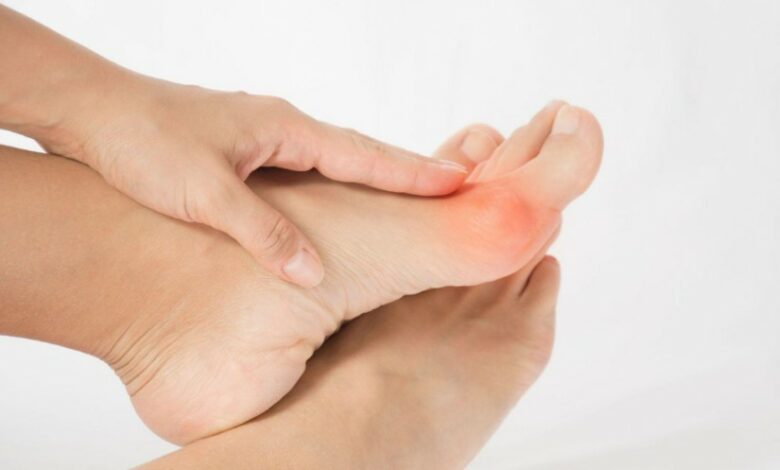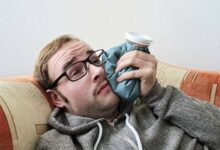How Can You Manage and Treat Bunions Effectively?

Bunions can be a real pain, both literally and figuratively. They affect our daily activities and can make even the simplest tasks uncomfortable. In this article, we’ll investigate effective ways to manage and treat bunions, helping us get back on our feet with confidence. Visiting a podiatry clinic can be a crucial step in finding the right treatment and care for your bunion issues.
Understanding Bunions
What Are Bunions?
Bunions, also known as hallux valgus, are bony bumps that form on the joint at the base of your big toe. These protrusions occur when the big toe pushes against the next toe, forcing the joint of the big toe to get larger and stick out. Over time, this misalignment can worsen, leading to pain and difficulty walking. Symptoms include swelling, redness, and soreness around the big toe joint.
Causes of Bunions
Several factors can lead to the development of bunions. Genetics play a significant role, as the condition often runs in families. Structural abnormalities in the foot, such as flat feet or low arches, can contribute to bunion formation. Improper footwear, particularly tight, narrow shoes, can exacerbate the problem by placing excessive pressure on the big toe joint. Additionally, certain medical conditions like arthritis can increase the likelihood of developing bunions.
Read also: How to use heat pressling to combat dust allergy?
Symptoms and Diagnosis
Recognizing Bunion Symptoms
Bunions cause distinct symptoms, easily identifiable if carefully observed. Common symptoms include:
● Visible Bump: A swollen, bony bump develops on the joint at the base of the big toe.
● Pain and Tenderness: Persistent pain around the joint, often worsening with prolonged walking or standing.
● Swelling and Redness: Inflammation around the big toe joint, sometimes accompanied by a burning sensation.
● Restricted Movement: Limited motion in the big toe, making it hard to wear certain shoes or walk comfortably.
● Calluses: Thickened skin may form where the first and second toes overlap.
How Are Bunions Diagnosed?
Bunions are diagnosed through a series of evaluations and tests. Health professionals use specific methods to confirm the presence and severity of bunions:
1. Physical Examination: Physicians examine the foot visually and physically to check for swelling and deformity.
2. X-Rays: Imaging helps to assess the alignment of the toe bones and the severity of the bunion.
3. Medical History: Doctors review the patient’s medical history, including any family history of bunions, to identify potential genetic factors.
4. Gait Analysis: Evaluating the way a patient walks can reveal misalignments and pressure points caused by bunions.
Effective management begins with timely recognition and professional diagnosis.
Non-Surgical Treatment Options
Lifestyle and Home Remedies
Incorporate specific lifestyle changes and home remedies to alleviate bunion discomfort. Wear well-fitted shoes with wide toe boxes to reduce pressure on the bunion. Avoid high heels and narrow shoes, which exacerbate symptoms. Use ice packs to reduce swelling and inflammation, applying them for 15-20 minutes several times a day. Consider over-the-counter bunion pads and cushions to provide additional comfort.
Practicing foot exercises can improve flexibility and strength. Stretching the toes and performing exercises like toe curls and spreading them apart can improve mobility. Maintaining a healthy weight reduces stress on the feet, thus decreasing symptoms. For those standing for long periods, take regular breaks to relieve pressure on the bunion.
Medications and Orthotics
Medications can help manage bunion pain and inflammation. Nonsteroidal anti-inflammatory drugs (NSAIDs) like ibuprofen or naproxen relieve pain and reduce swelling. If over-the-counter options are ineffective, consult a healthcare provider for prescription-strength medications.
Orthotic devices offer significant relief and support. Custom orthotics, molded to the shape of the foot, ensure proper alignment and distribute pressure evenly. Gel-filled or padded shoe inserts provide cushioning and reduce friction. Night splints keep the toe straight, slowing the progression of the bunion.
Using these non-surgical approaches, we aim to manage bunion symptoms effectively and improve foot health.
Surgical Treatments
Types of Bunion Surgery
Surgical options for bunions aim to relieve pain, correct deformity, and restore function. Three main types of bunion surgery are:
1.Osteotomy
The surgeon cuts and realigns the bones of the big toe.
2.Exostectomy
Removal of the bony bump from the toe joint occurs.
3.Arthrodesis
The damaged joint is removed and the bones are fused together.
The chosen surgery type depends on the severity of the bunion, the patient’s age, overall health, and activity level.
What to Expect During Recovery
Recovery from bunion surgery requires patience and care. Generally, stages include:
●Immediate Post-Surgery
Expect swelling and discomfort. Keeping the foot elevated and applying ice can reduce swelling. Pain medications manage pain effectively.
●First Few Weeks
Most patients use crutches or a walker to avoid putting weight on the foot. Bandages and dressings need regular changing to prevent infections.
●Progressive Healing
By six to eight weeks, walking with a special shoe or boot becomes possible. Physical therapy may help strengthen the foot.
●Full Recovery
Complete recovery takes about six months, with most patients returning to normal footwear and activities.
Following the surgeon’s advice closely ensures optimal results.
Prevention Strategies
Footwear Choices
Wearing proper footwear helps prevent bunions. Shoes should have a wide toe box to lessen pressure on the toes. High heels and pointed-toe shoes exacerbate bunions, so it’s best to choose shoes with low heels and proper arch support. Custom orthotics can also provide additional cushioning and reduce stress on the feet. According to the American Orthopaedic Foot & Ankle Society, choosing shoes that conform to the natural shape of the foot is crucial for long-term foot health.
Exercises for Foot Health
Performing specific foot exercises strengthens the muscles around the bunion, alleviating pain and preventing progression. Toe stretches, such as flexing and extending the toes, increase flexibility. Towel scrunches involve picking up a towel with your toes and can improve the strength of the arch. For added benefit, try rolling a tennis ball under your foot to massage and stretch the plantar fascia. Consistent exercise improves circulation and maintains the alignment of the foot, reducing the risk of developing bunions.
Conclusion
Managing and treating bunions effectively requires a multifaceted approach. By recognizing the symptoms early and seeking professional advice, we can make informed decisions about our treatment options. Non-surgical methods like lifestyle changes and orthotic devices can offer significant relief. For more severe cases, surgical procedures provide viable solutions. Prevention strategies, including proper footwear and foot exercises, play a crucial role in maintaining foot health and preventing the progression of bunions. By combining these strategies, we can take proactive steps toward healthier, pain-free feet.
Frequently Asked Questions
What are the common causes of bunions?
Bunions are often caused by wearing tight, narrow shoes, genetic predisposition, and certain foot deformities. Arthritis and foot injuries can also contribute to their development.
What symptoms indicate the presence of bunions?
Symptoms include a bulging bump on the base of your big toe, swelling, redness, or soreness around the big toe joint, and persistent or intermittent pain.
How can I manage bunion symptoms without surgery?
Non-surgical treatments include wearing comfortable shoes with a wide toe box, taking pain relievers, using orthotic devices, and making lifestyle changes like avoiding high heels.
What surgical options are available for bunion treatment?
Surgical options include Osteotomy (bone repositioning), Exostectomy (removing part of the bump), and Arthrodesis (fusing joints).
What is the recovery process like after bunion surgery?
Recovery involves rest, limited movement, and wearing a surgical boot or cast. Physical therapy may be required to restore full foot function.
How can I prevent bunions from developing?
Preventive measures include wearing properly fitting shoes, avoiding high heels, using custom orthotics, and performing foot exercises such as toe stretches and towel scrunches.
Do foot exercises really help with bunion pain?
Yes, foot exercises like toe stretches and towel scrunches can strengthen foot muscles, alleviate pain, and help prevent the progression of bunions.







